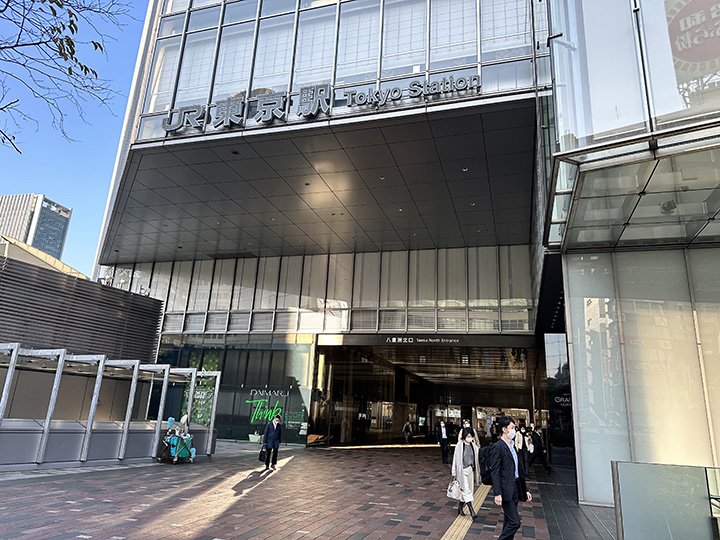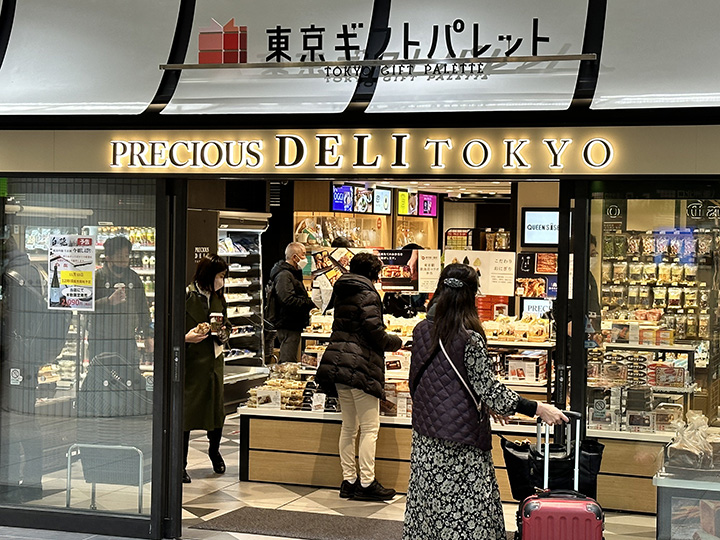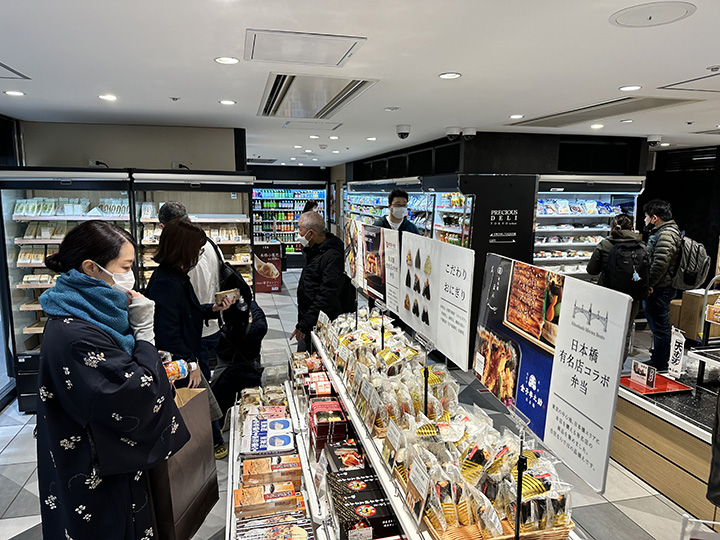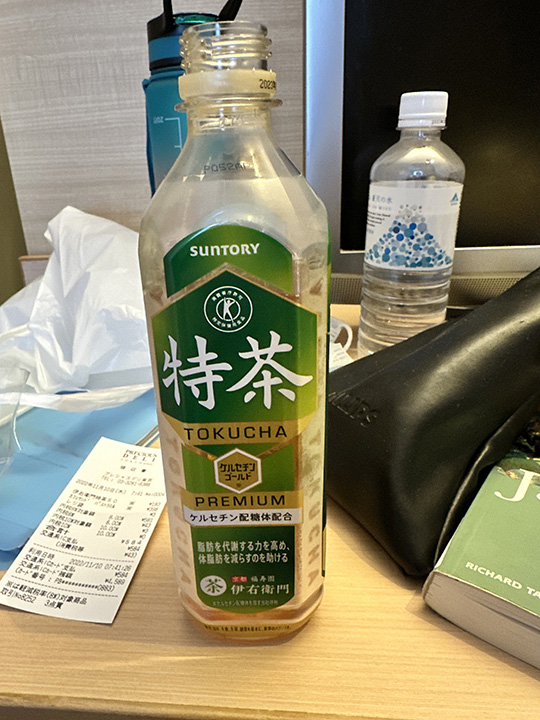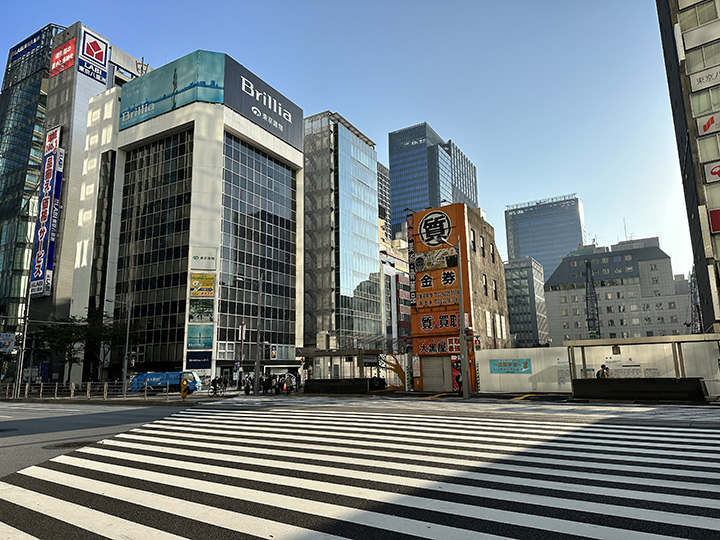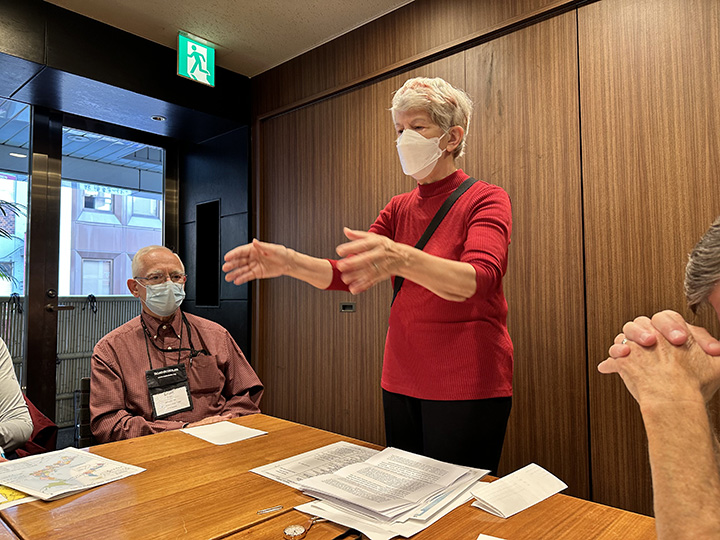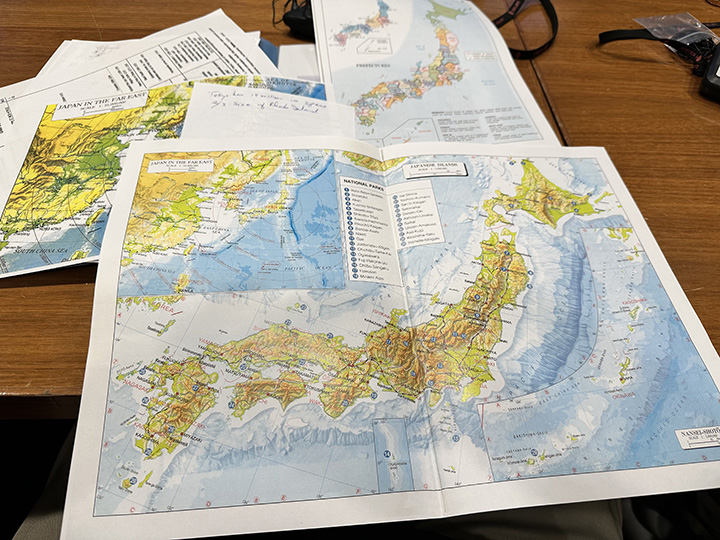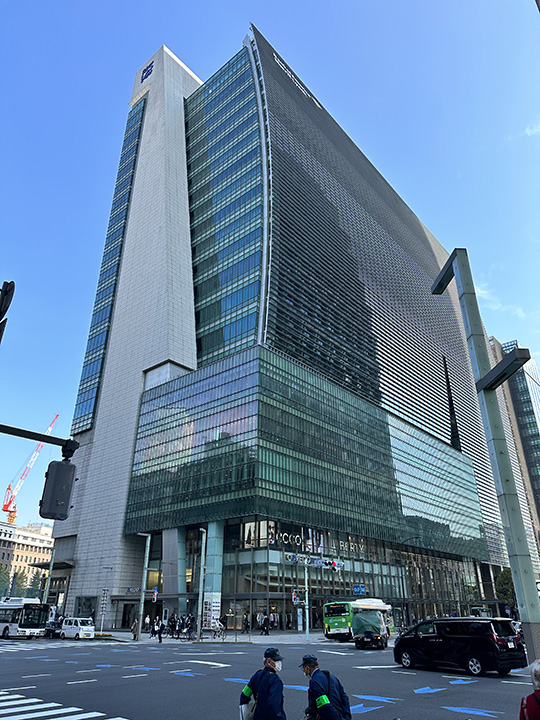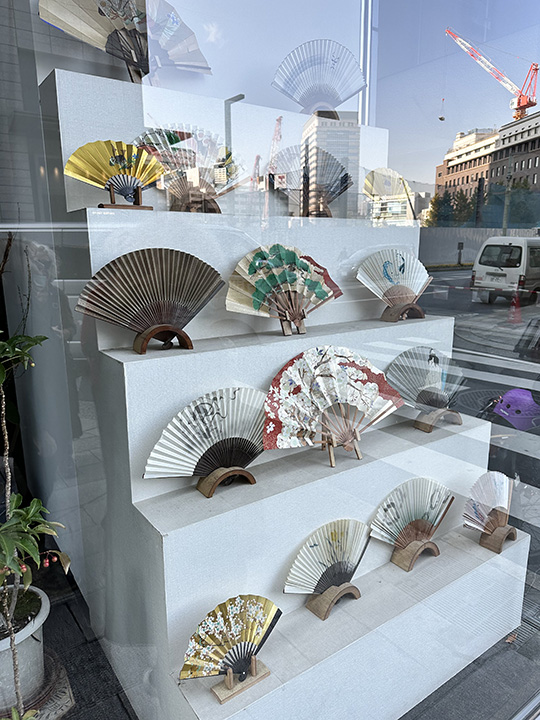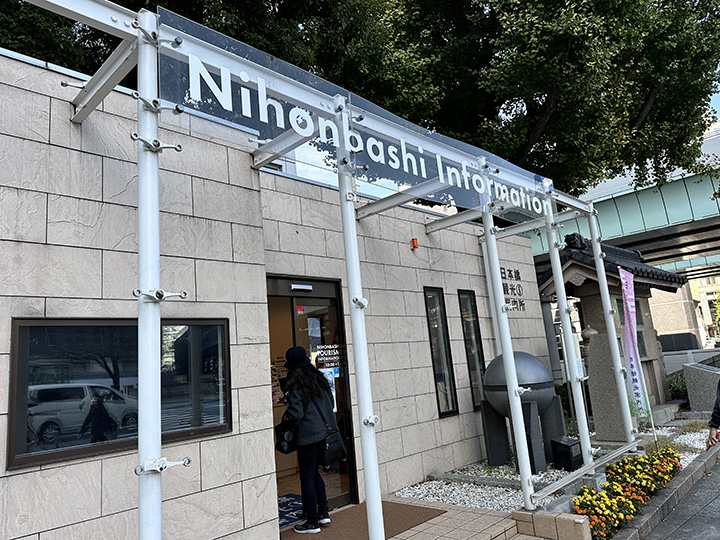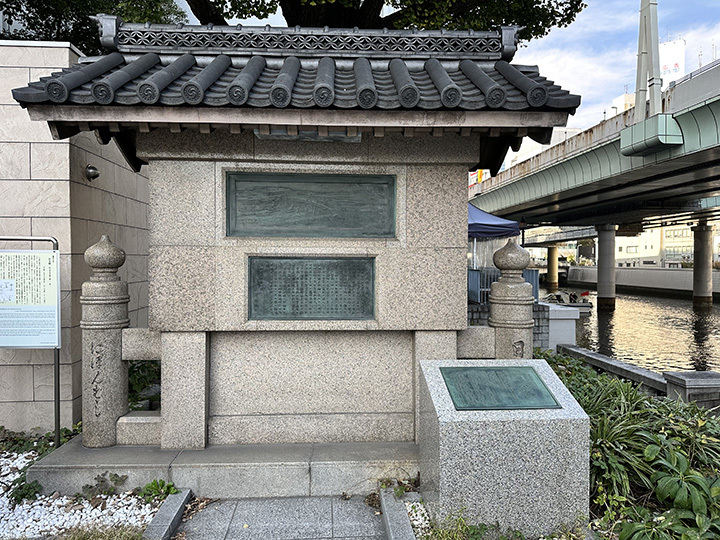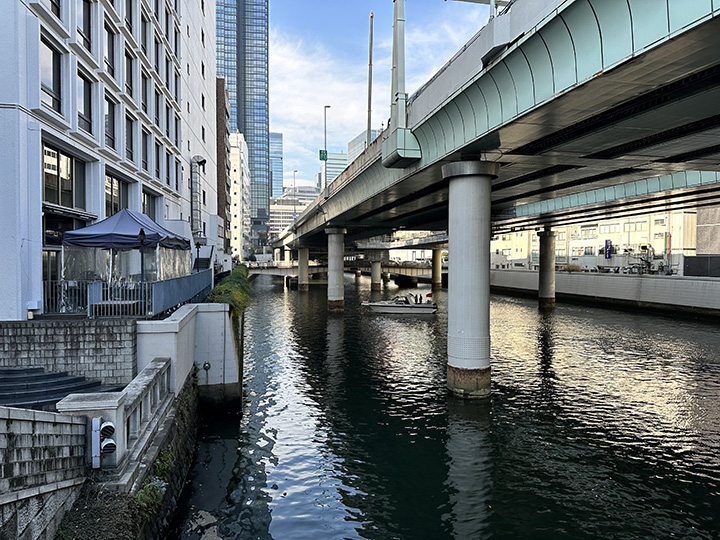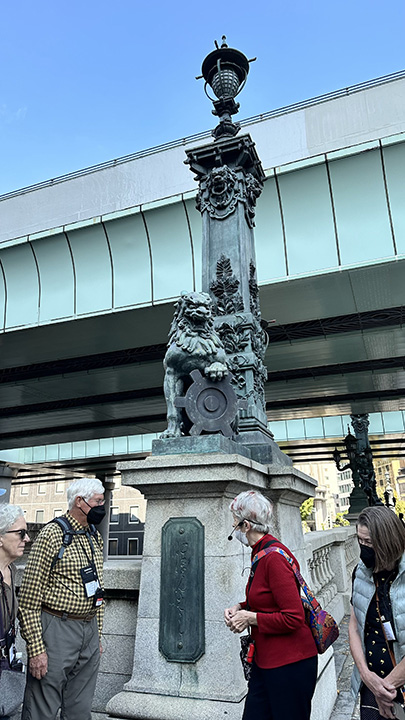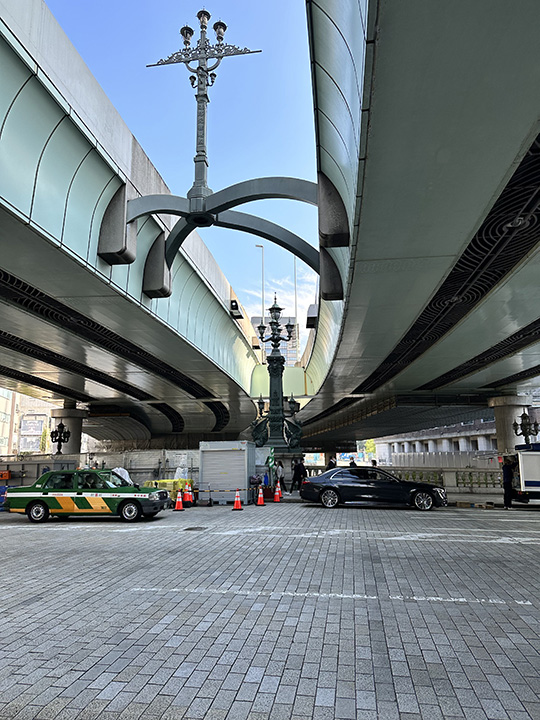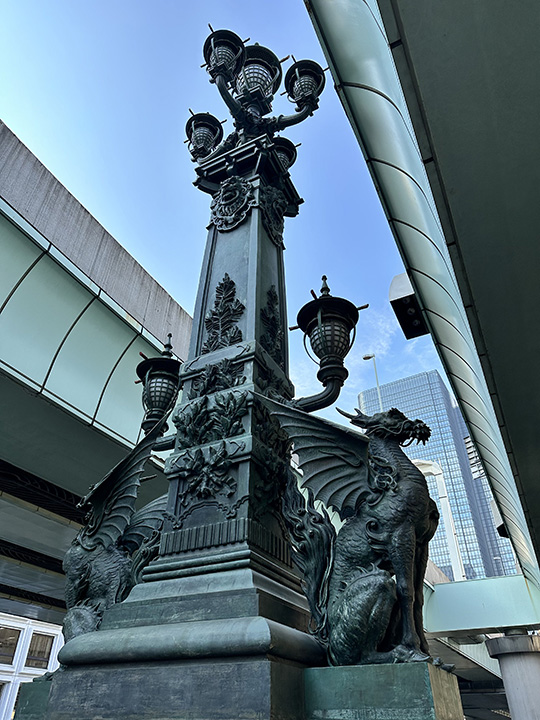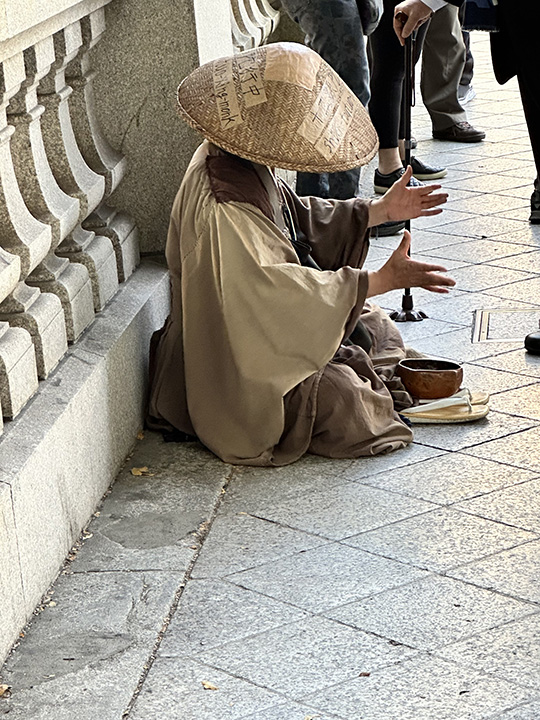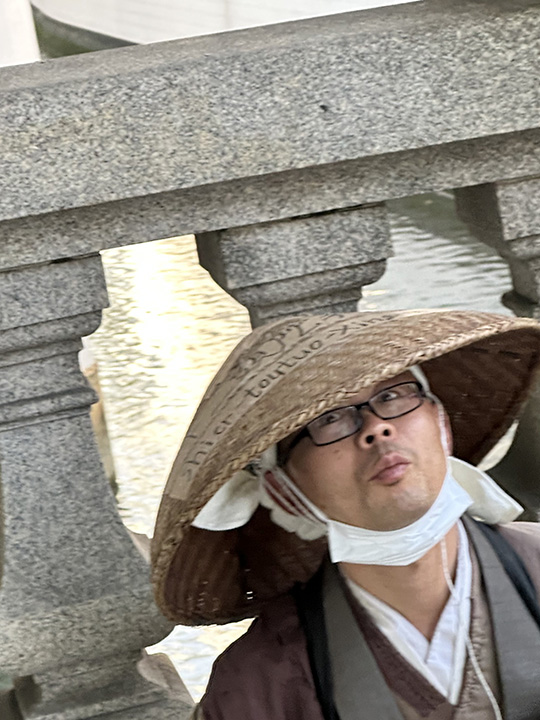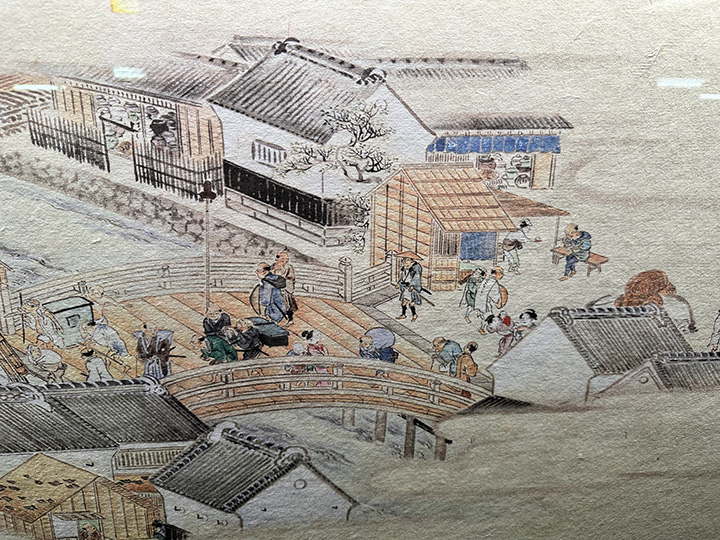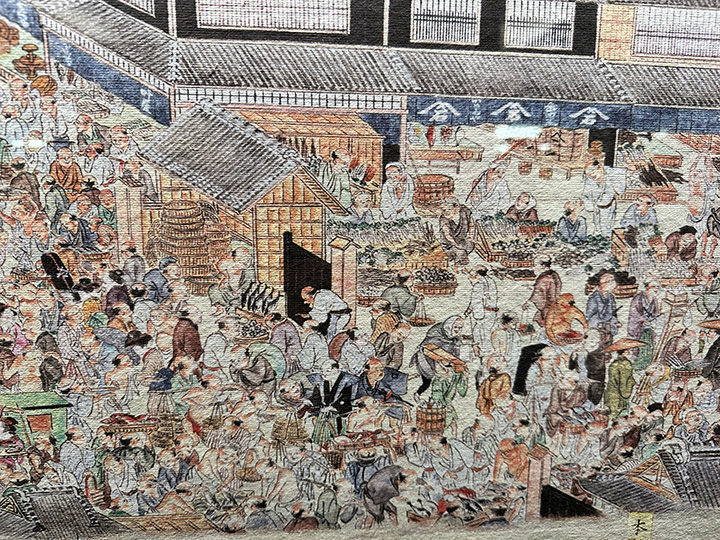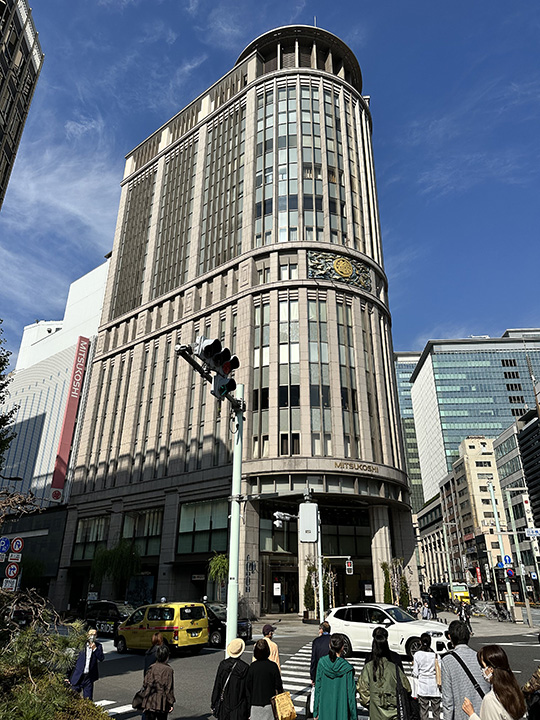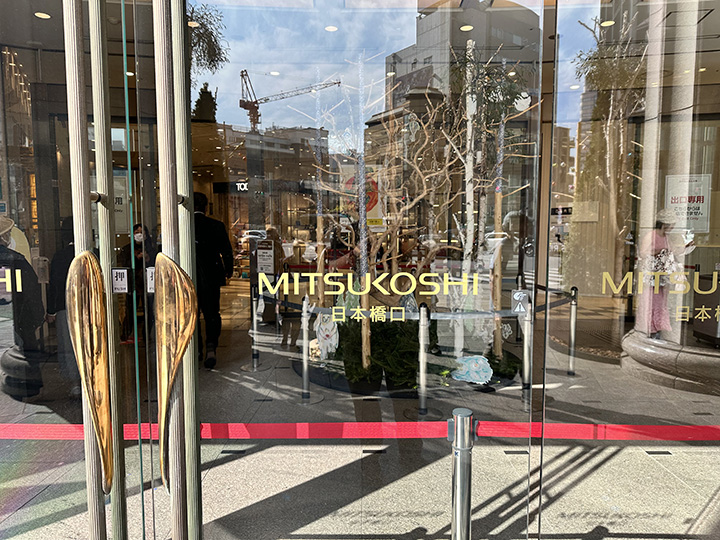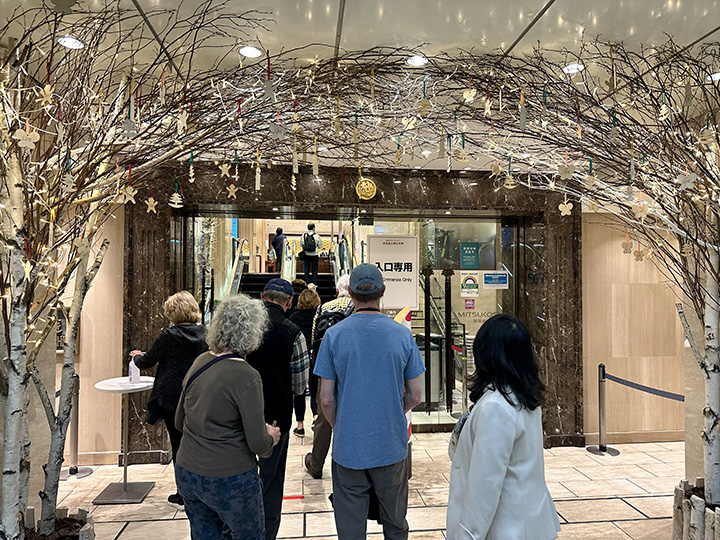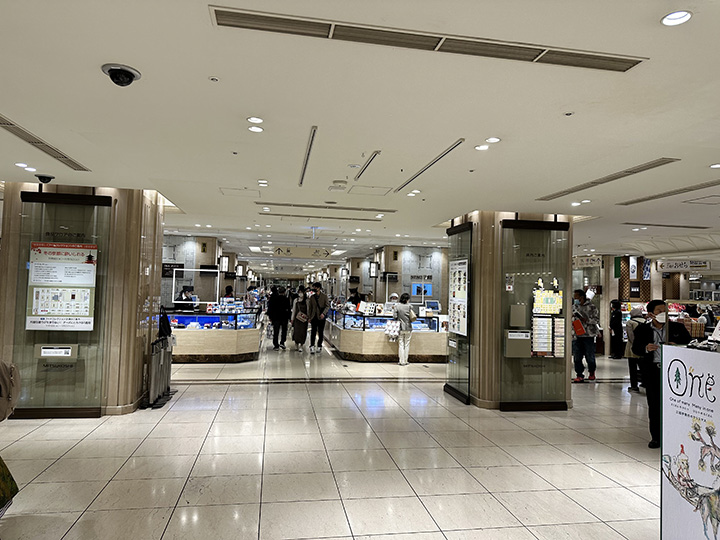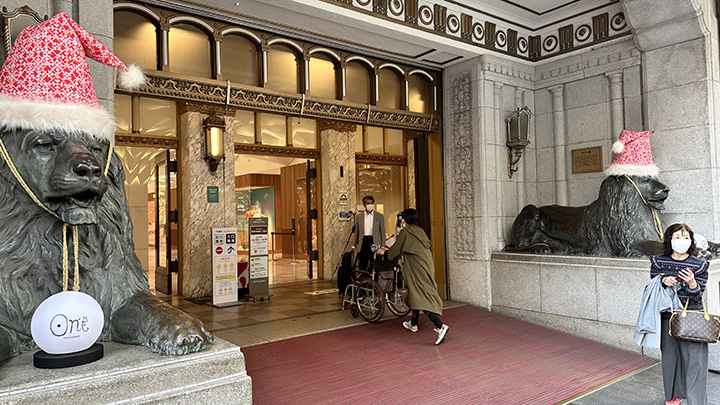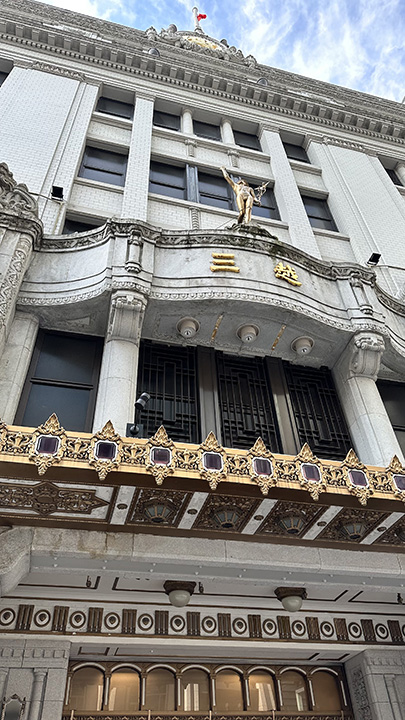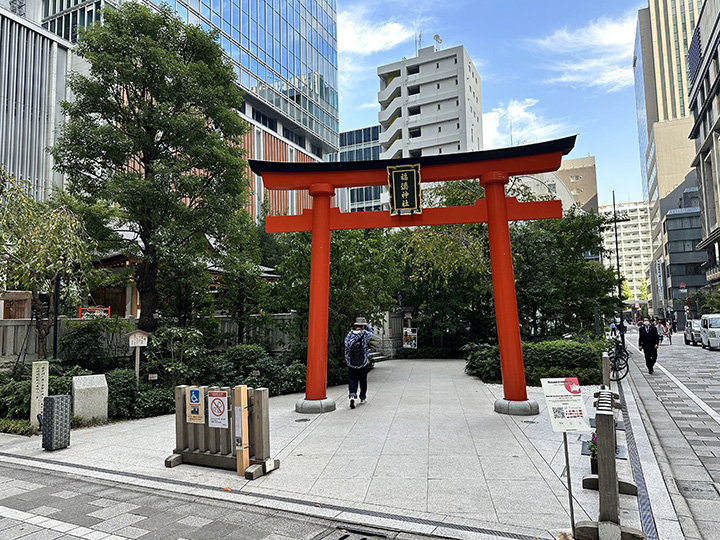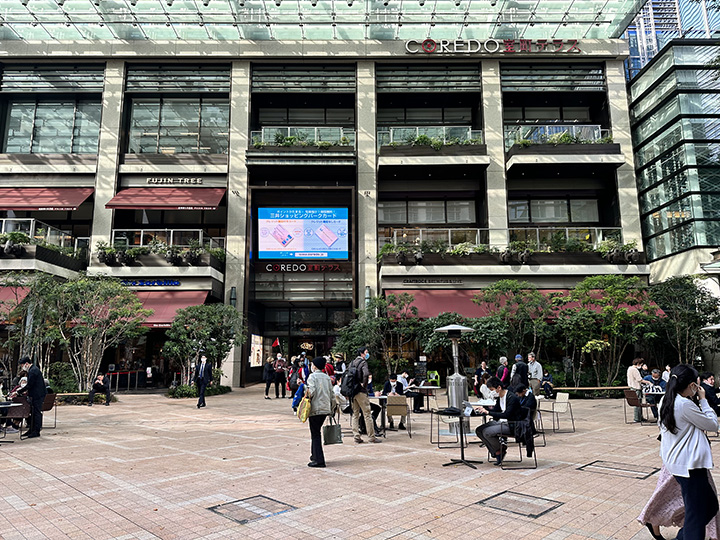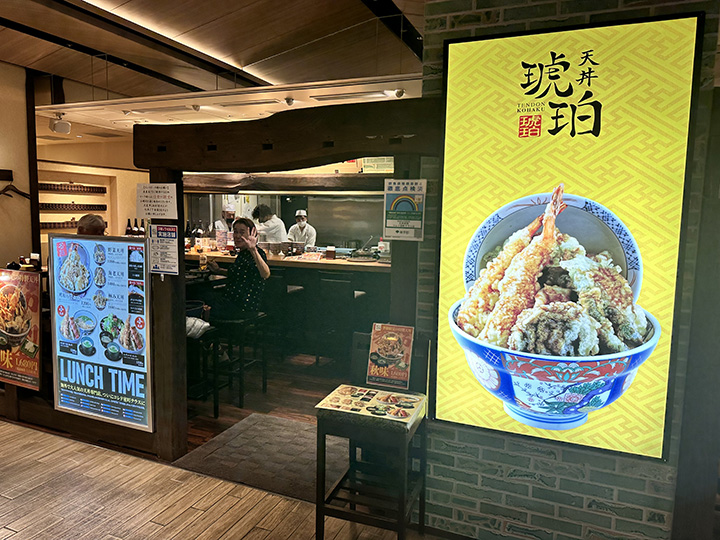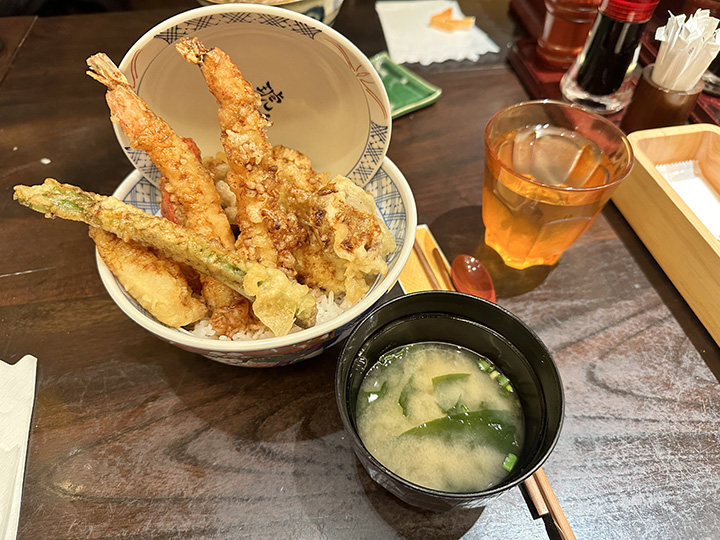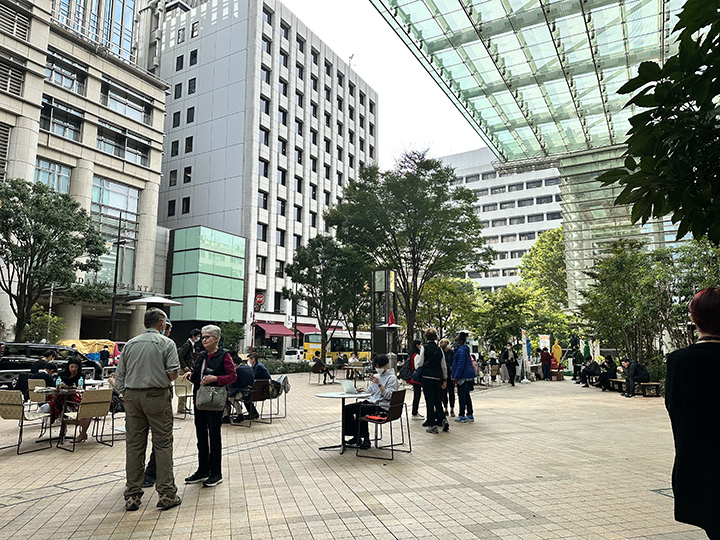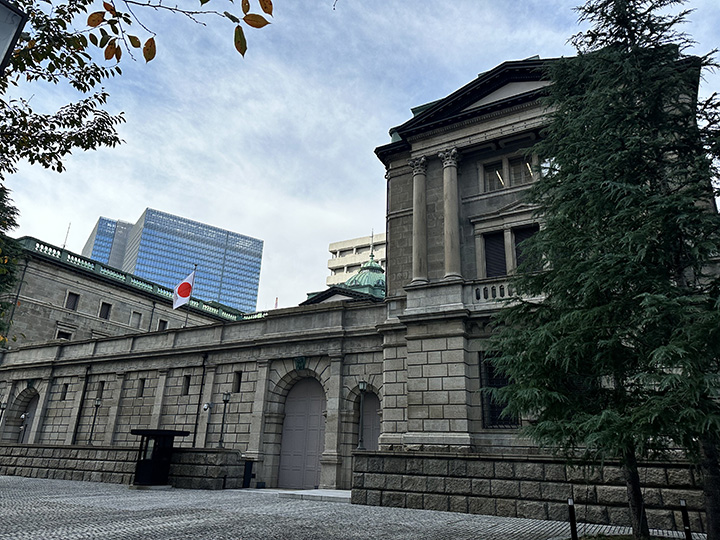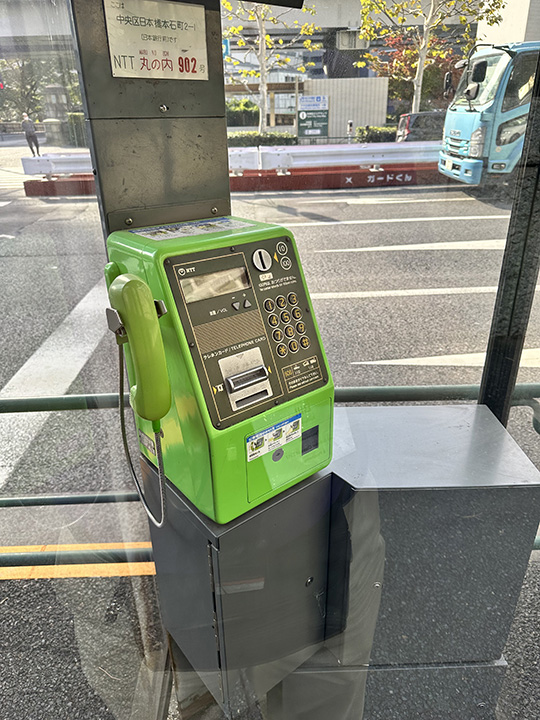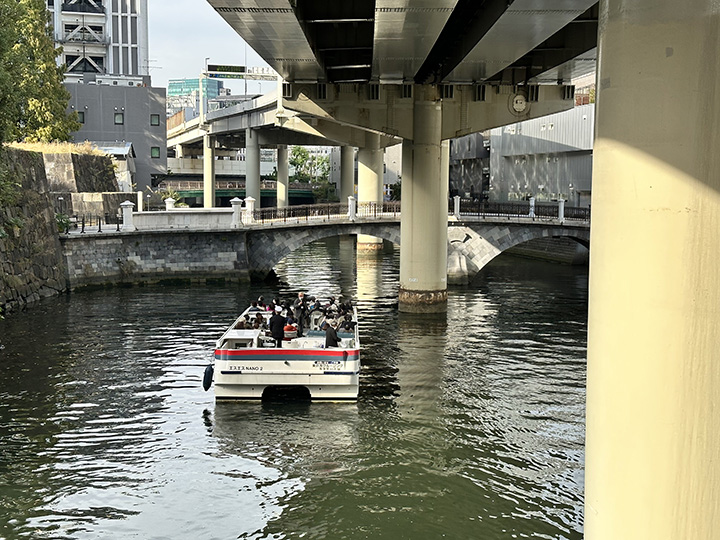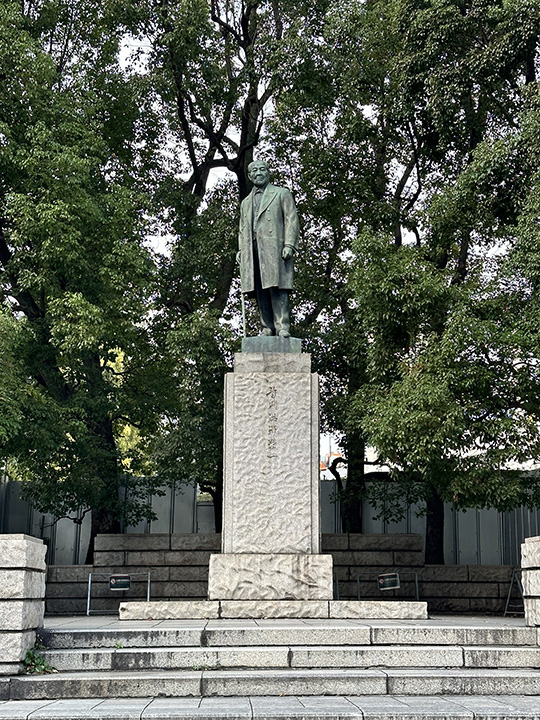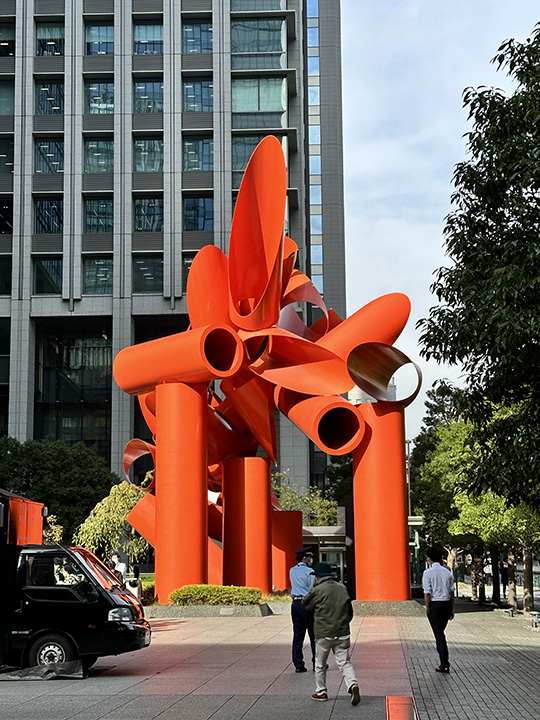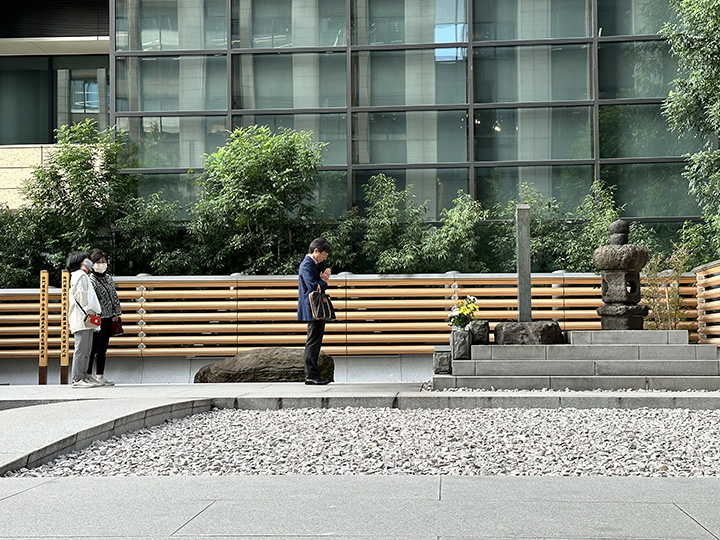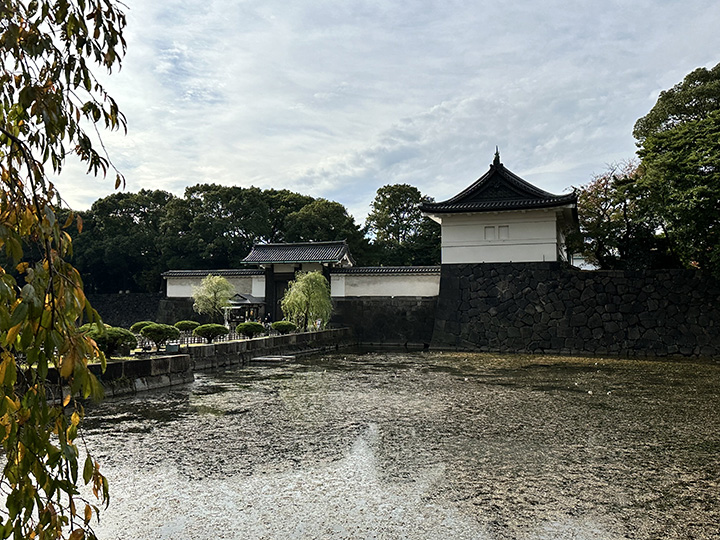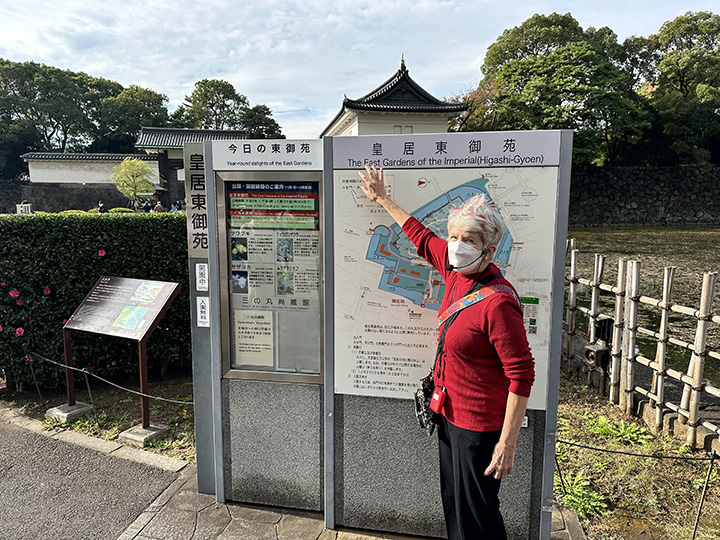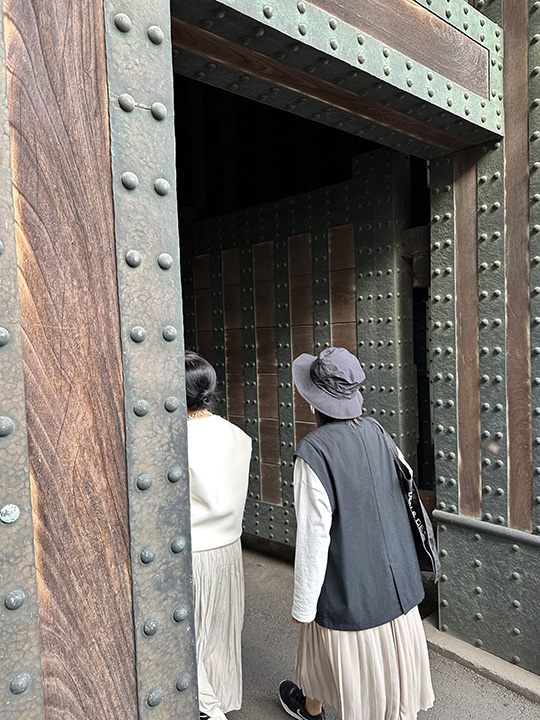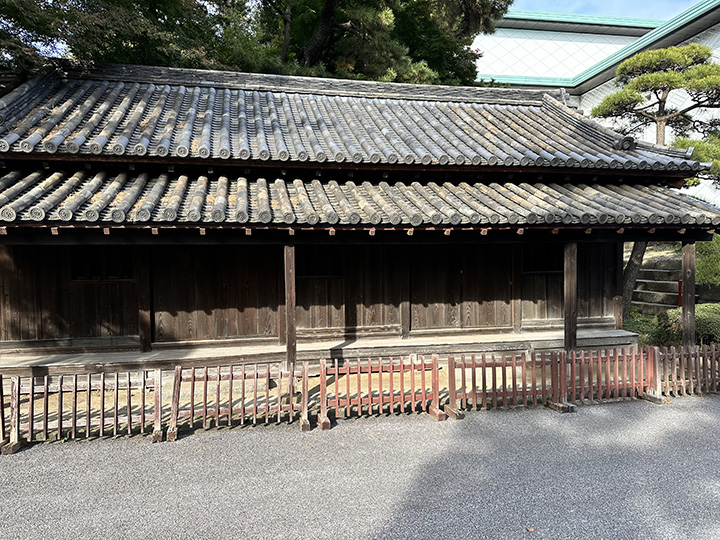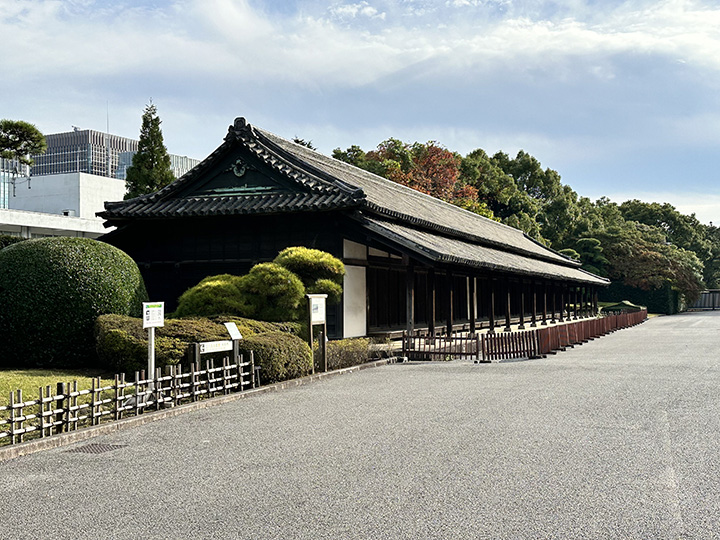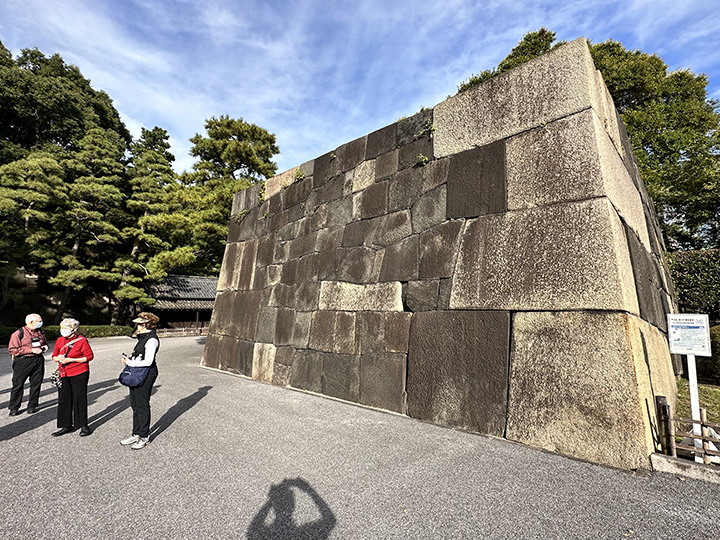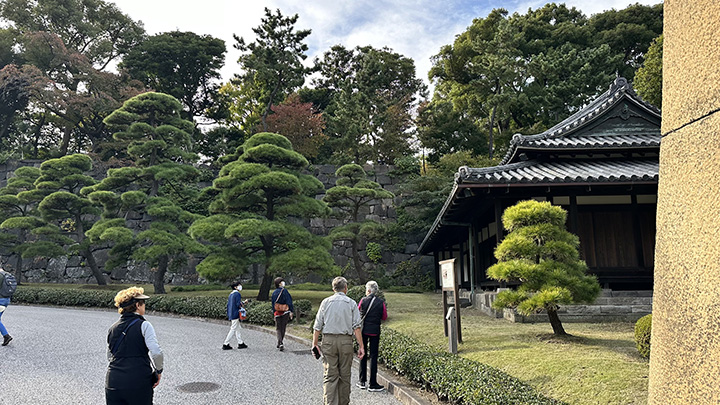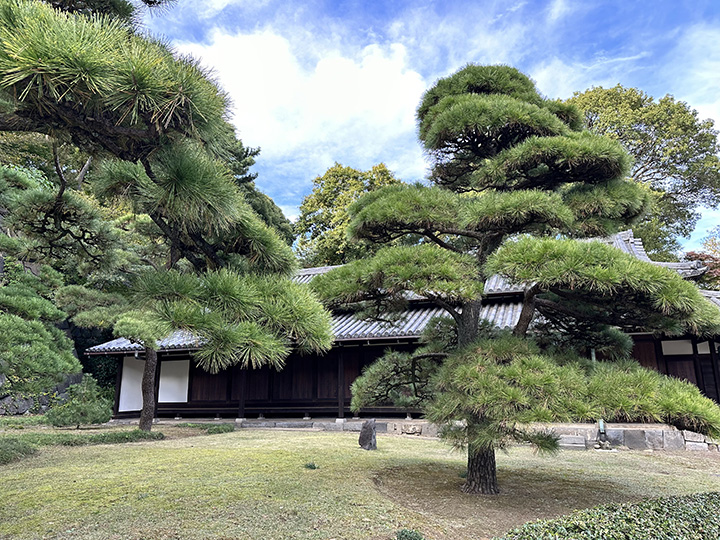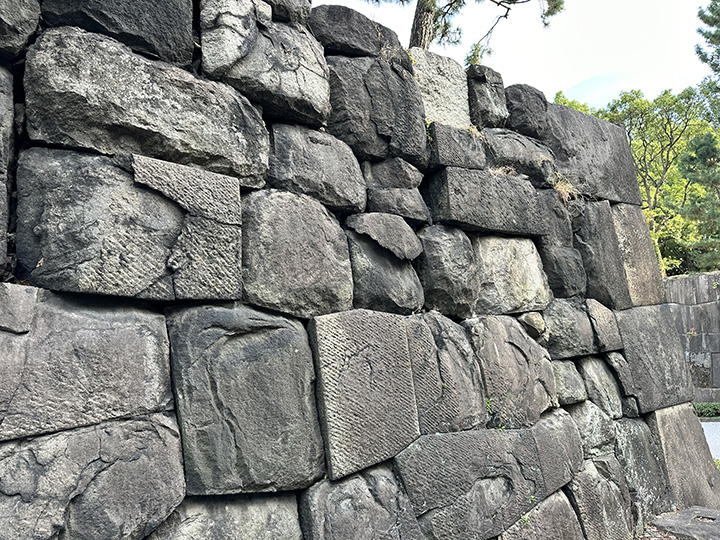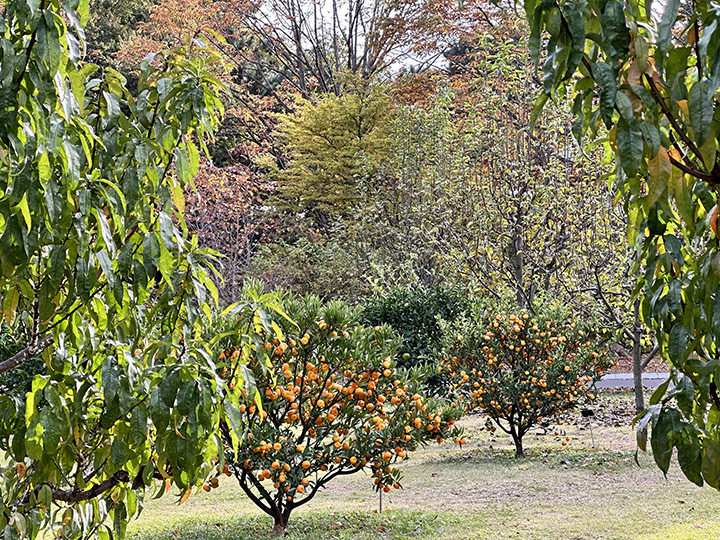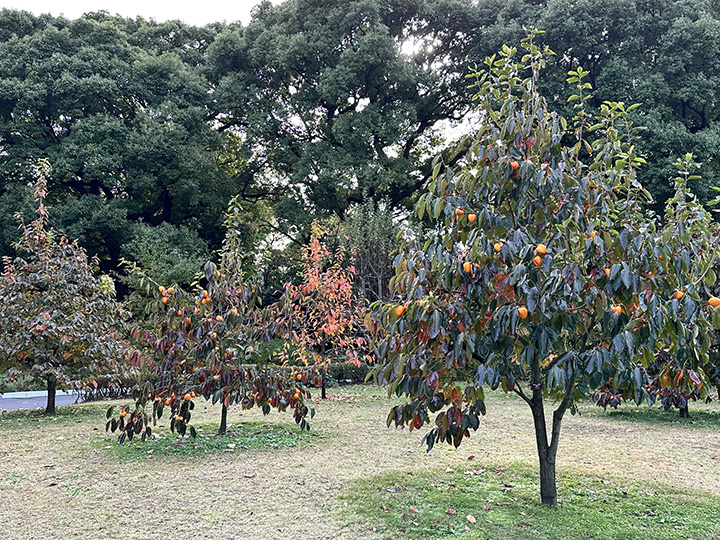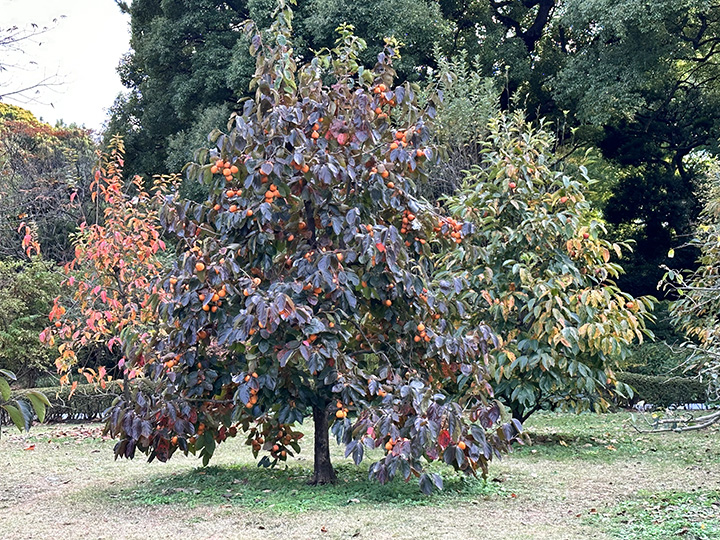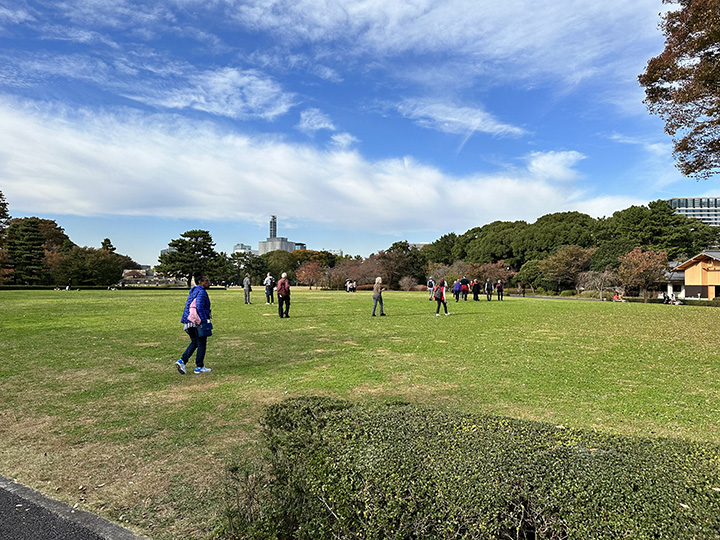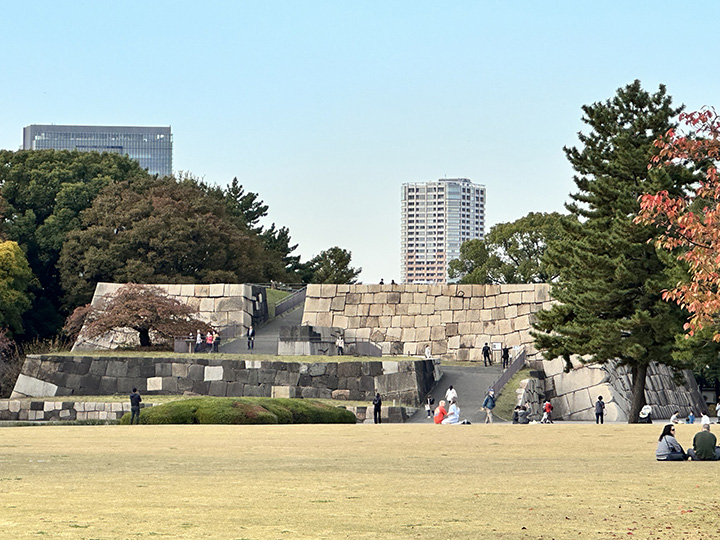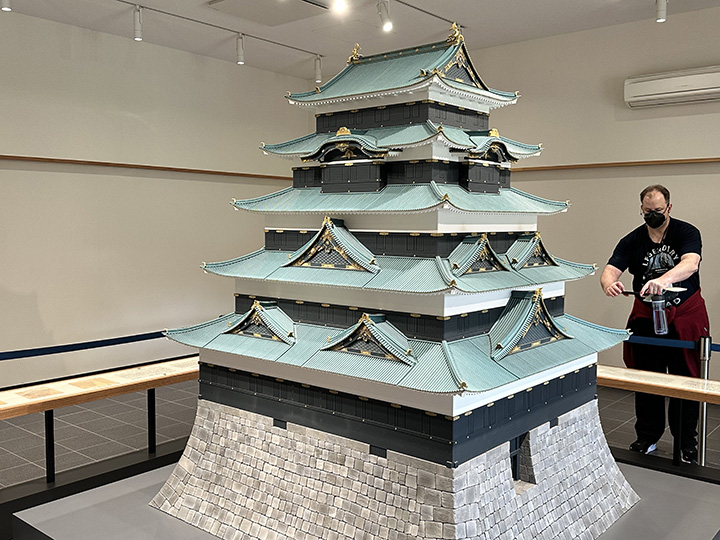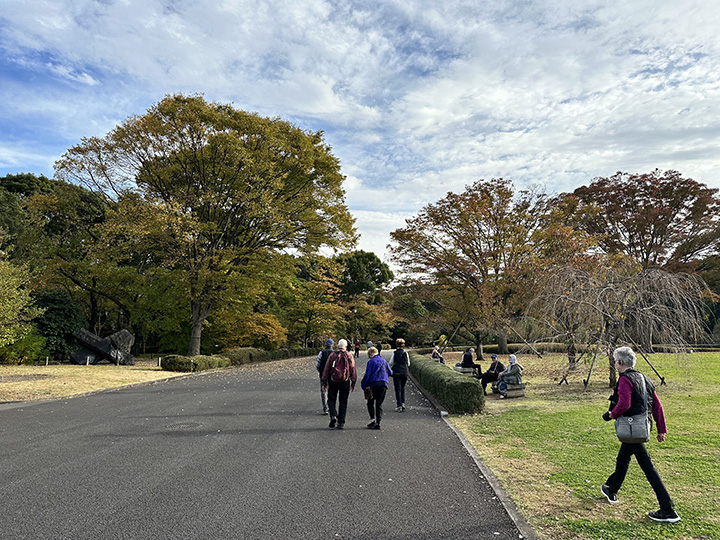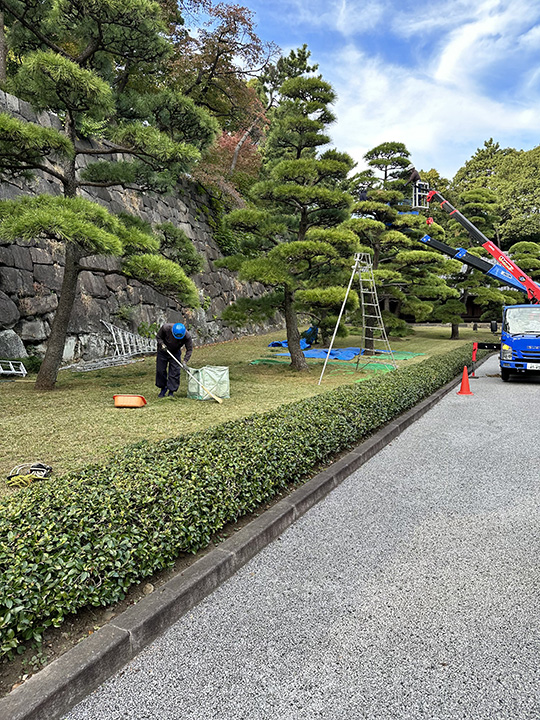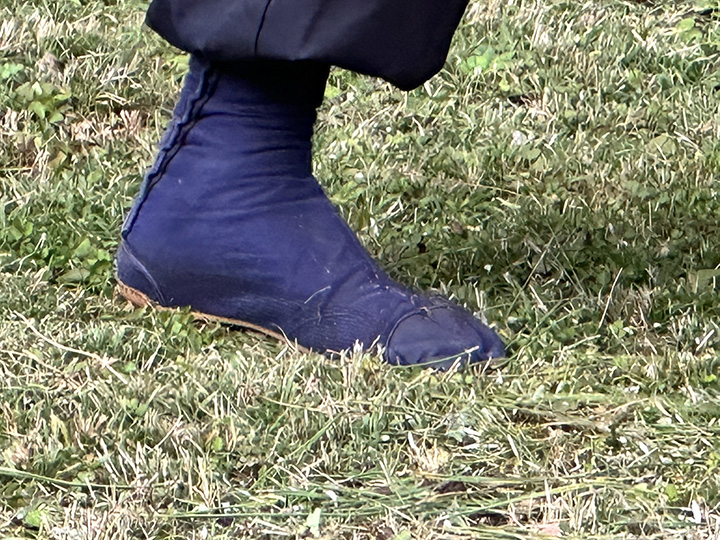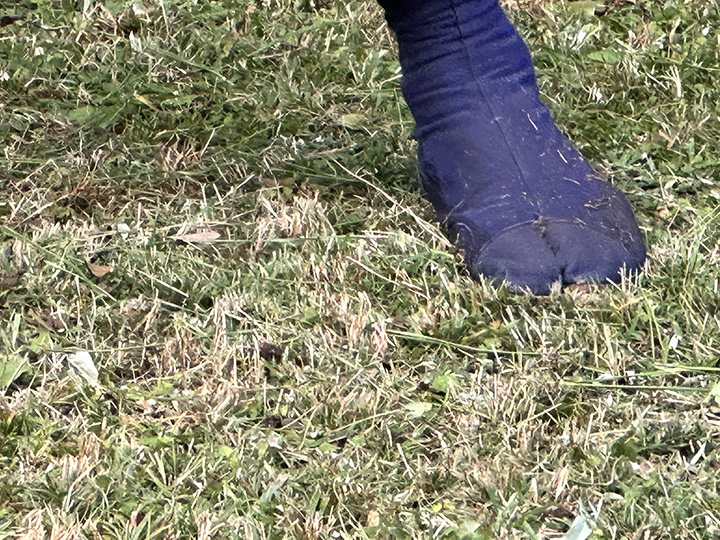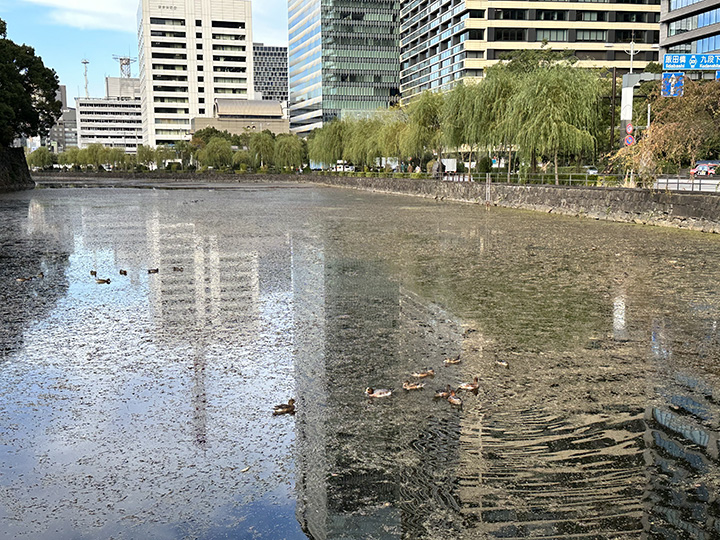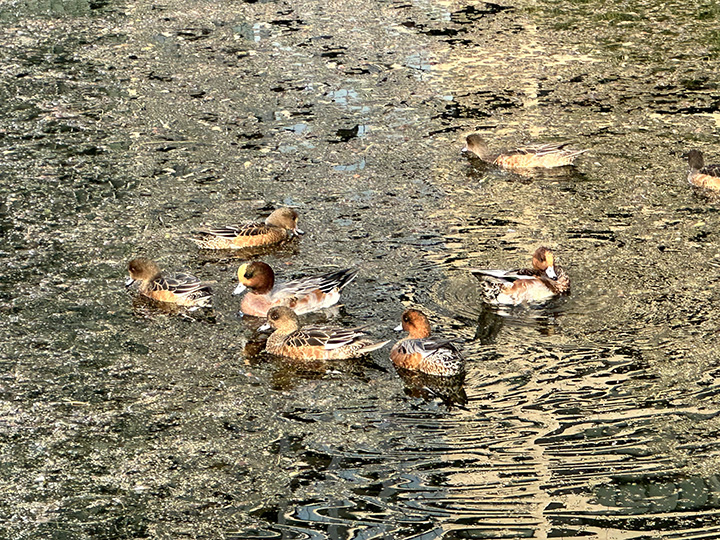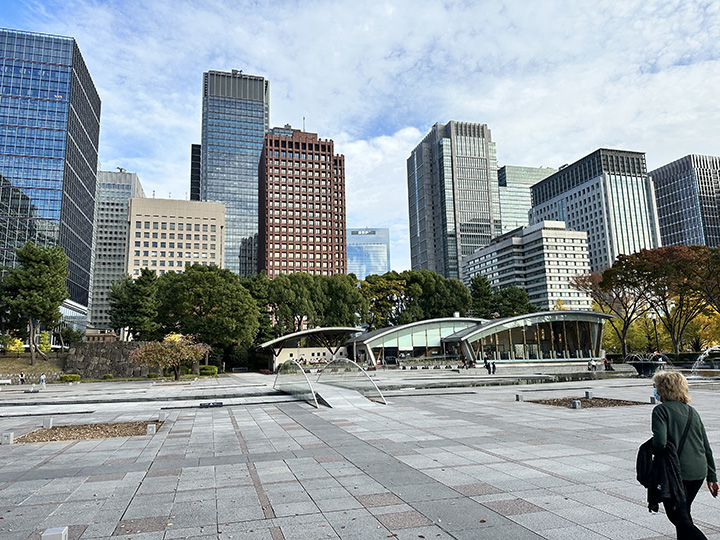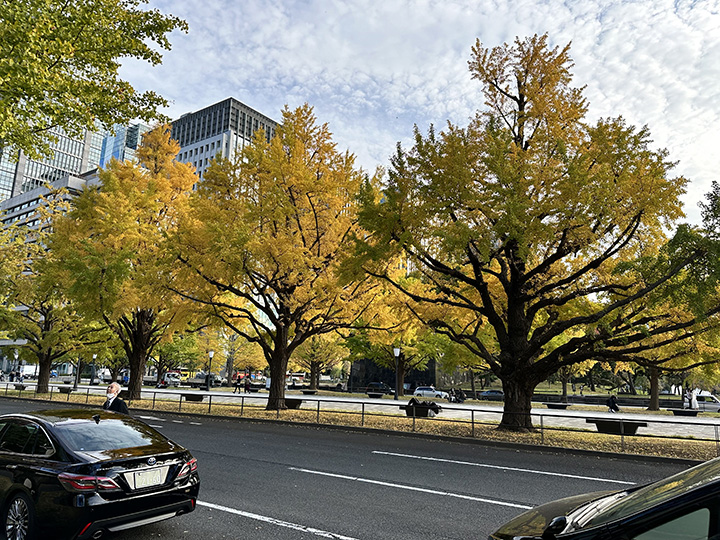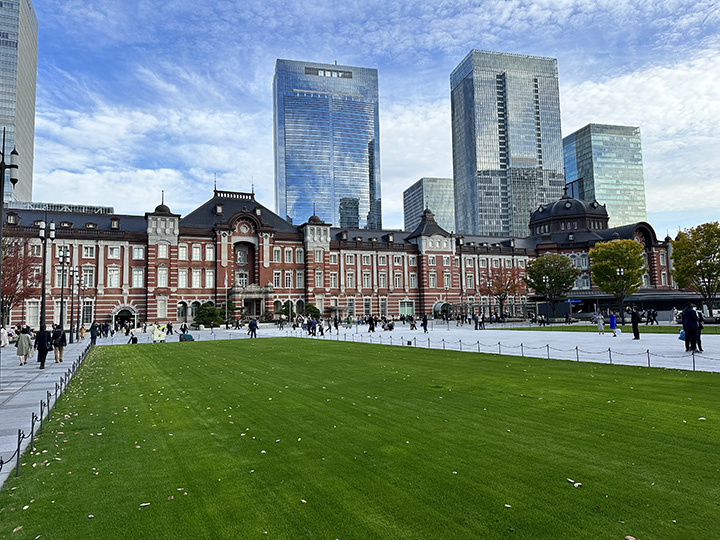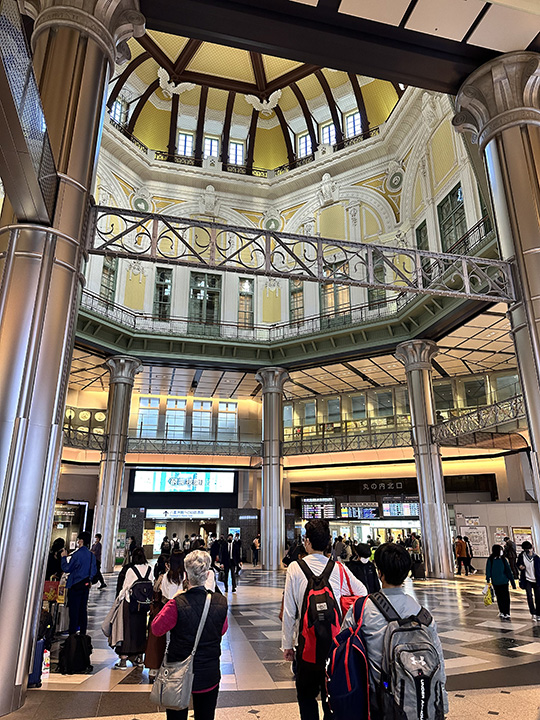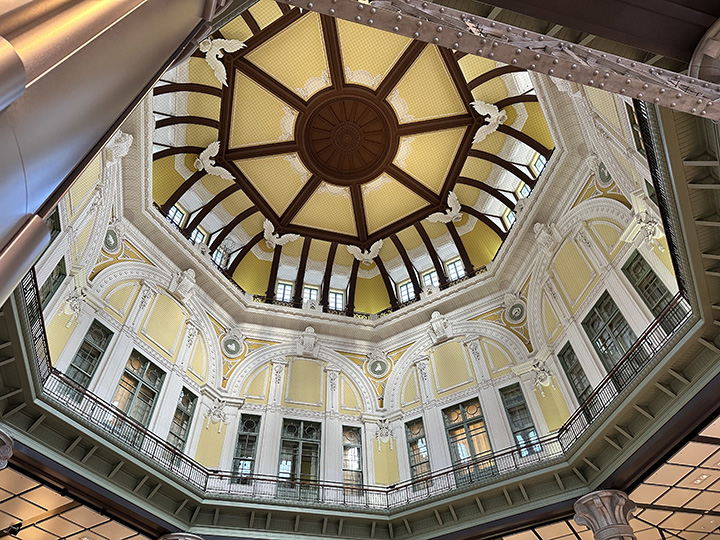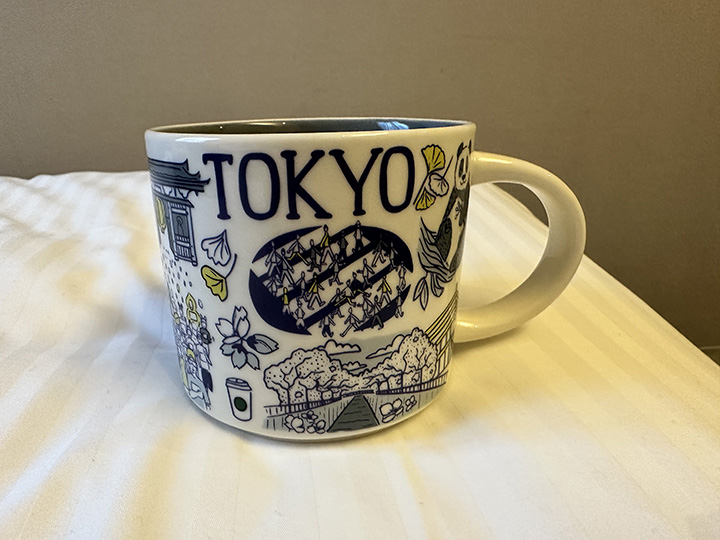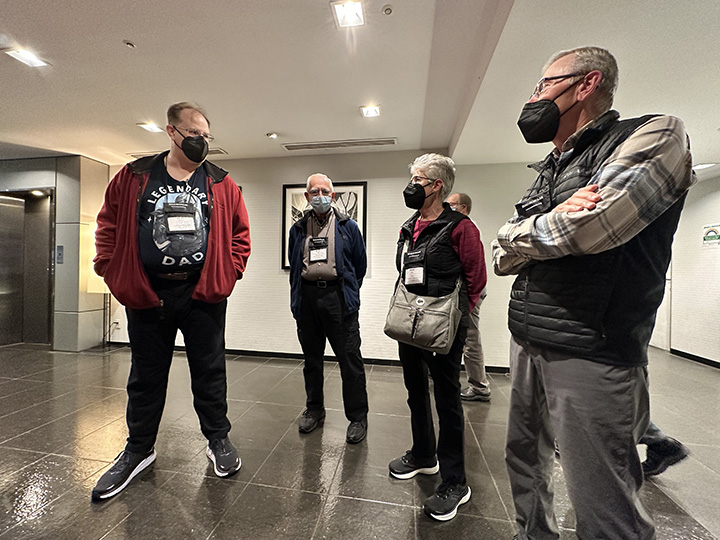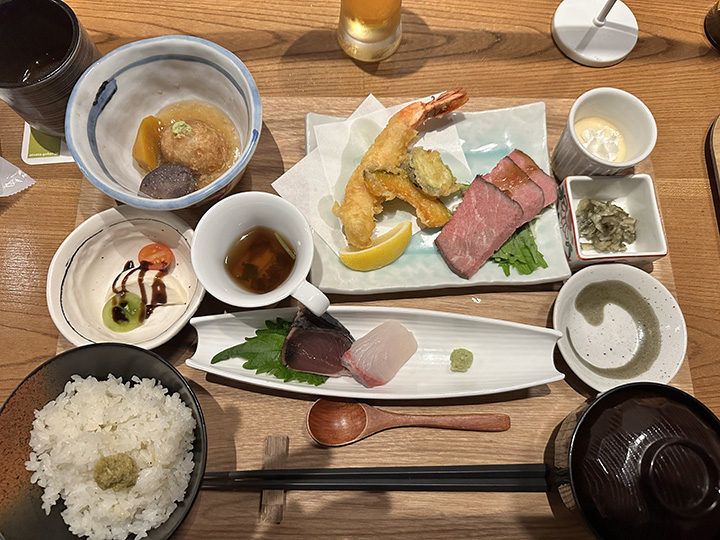|
Today was our first day of true touristing and we did a lot of walking. It has been over 2 1/2 years since Iíve been on one of these trips, and toward the end of the day I was beginning to wonder if my legs had forgotten how to be a Road Scholar. But they held out.
Our hotel is just about a block away from Tokyo Station, a huge central hub for commuters and other travelers. I am on a mission to find a Starbucks that will sell me a souvenir mug that says Tokyo on it. I was told there are four Starbucks in the station but the only one I could find this morning didnít sell mugs. I refuse to give up. I will not leave the city without a Tokyo Starbucks mug.
Meanwhile I will just grab a little breakfast at this place.
There's plenty to choose from. I can't tell what most of it is, but there is plenty of it.
I had a ham sandwich and some green tea. This is a green tea, isnít it? I think it is green tea.
I'm walking back to the hotel. It's over there somewhere behind that orange building that looks like it doesn't belong.
We started the day of touring with a round of introductions and a briefing on Japanese history by Kathleen our tour guide. Back in the 70s she was working for Sony in the US and ended up marrying one of her coworkers in a marriage arranged by their boss. I am not making this up; according to Kathleen Sony expected supervisors to arrange marriages among their employees. It was the 70s ó what can I say?
She provided handouts. That's Japan.
And now we have headed out into the heart of Tokyo to see the sights. That is a department store over there. Takashimaya.
Thatís the Bank of America.
Those are fancy fans.
And this is the visitor center at the Nihonbashi bridge which was built in 1911 to cross a canal. This is an important spot in the history of Japan because like in Italy all roads lead to Rome, in Japan all roads lead to Nihonbashi.
In 1604, the Edo Period shogunate designated the Tokaido Road, Koshukaido Road, Oshukaido Road, Nikkokaido Road, and Nakasendo Road as the "five Gokaido roads," Japan's main avenues of transportation and trade. Nihonbashi marked the starting point for this major road network.
Hereís the view of the canal from the bridge.
And here is Kathleen showing us some of the lovely bridge decorations.
But they are dwarfed by a an ugly superhighway that was constructed for the 2020 Olympics. The highway was vital for the Olympics, but it overshadows everything. Fortunately construction of a tunnel under the canal is underway and in about 12 years that overhead highway will be all gone.
Until then you just have to imagine what the bridge should really look like.
We attempted a group picture here. C'mon gang ... lose those masks.
Kathleen was surprised to see this beggar dressed like a monk. She thought he might not be everything he seemed to be, not a monk at all.
Does he look like a monk to you? I dunno.
We have walked down into a subway station to see a replica of a famous old painting that depicted the Nihonbashi market area in 1805. The original is now in Berlin, but this is pretty nice.
It is called the Kidai Shoran and it depicts by actual count 1,671 people of all ages, 20 dogs, 13 horses, four cows, 2 falcons and one monkey coming and going along the street.
I got that from a brochure; I didnít count them myself.
Sure is a lot of hustling and bustling going on.
There's still hustle and bustle around here. The Nihonbashi Mitsukoshi department store started as a drapery shop in the 17th century.
It is fancier now.
Very fancy.
Almost as fancy as Goldsmith's.
On a trip to England the owner saw the British lion and just had to have a couple for his entrance. They are dressed for Christmas already.
I told you it was a fancy place.
There is a Shinto shrine over there. The entranceway is called a torii.
We should be able to find some lunch here.
This looks promising. Shrimp tempura...yum!
It was pretty good, but nothing special.
So we ate quickly and stepped outside to people-watch.
That is the bank of Japan.
And that is a telephone booth. They have not gone extinct in Japan.
Maybe we would still have telephone booths if our telephones were this fancy.
Tourists in a canal.
Shibusawa Eiichi, 1st Viscount Shibusawa (March 16, 1840 Ė November 11, 1931) was a Japanese industrialist widely known today as the "father of Japanese capitalism.Ē So now you know.
Tokyo is a modern city with modern artwork.
Even with all the high-rise construction around, this spot is held sacred and people stop to pray. Thereís incense burning and it smells nice here.
Now we are headed to the final major sight of the day, the east gardens of the imperial palace. The gardens are surrounded by moats. Somebody needs to clean the moat. Kathleen says the emperor lives around here.
Kathleen tells us all about it.
We had to dodge some construction work.
Nice gate. Should keep the bad guys out.
The Doshin Bansho Guardhouse is one of three that survive from the Tokugawa Shogunate (1603-1867). It was manned by low-ranking samurai known as dashin, or constables, hence its name. Their job was to check visitors to the castle, and to keep watch over the retinues of the feudal lords as they waited for their masters to return from inside the bonmaru complex.
This is the largest of three guardhouses that have survived from the Edo period (1603-1867). Located between the San no Mon and Naka no Mon gates, this guardhouse controlled access to the bonmaru main compound of Edo Castle. The name means "100-Man Guardhouse." The 45-metre-long building was manned day and night by four shifts of samurai, each consisting of one hundred low-ranking doshin samurai and twenty higher-ranking yoriki samurai.
And that is part of the palace wall. How did they ever roll those stone blocks into place? They rolled them on logs greased with seaweed. That was about 400 years ago.
Nice trees.
I wonder who makes them look like that?
That stone wall was damaged when the wooden structure surrounding it burned. Mustíve been a very hot fire.
Kathleen thought the fruit might be kumquats.
But no, they are persimmons.
She explained that these Japanese persimmons are much too bitter to eat unless you wait for frost.
I told her it works that way in Tennessee too.
What a nice day to be walking in a park.
Back in the day they began building a magnificent tower for the palace grounds in order to spot invading forces. But after putting a lot of effort into building a base, they decided there werenít going to be any invading forces and they didnít really need the tower after all. Oops.
It would have looked like this.
The palace grounds are lovely.
They are maintained by a staff of gardeners. So that's who makes the trees look like that!
Kathleen noted that they are wearing the very special footwear favored by Japanese gardeners all over the country.
They are called jika-tabi and they feature a thin rubber sole and a split toe design
More moat.
With ducks.
Walking back to the hotel.
It has been a gorgeous day.
What Road Scholar promised regarding fall colors was no exaggeration.
And Bill is just happy to be here.
Here is another side of Tokyo station. The emperor uses the entrance in the middle. Even Road Scholars arenít allowed to use the emperorís entrance
There's a grand atrium.
With a fancy dome.
And there was a Starbucks inside that had a Tokyo mug for sale! My day is complete.
The Road Scholars are getting hungry.
And we have a nice spread for dinner. The light raw fish was OK. The dark raw fish not so much. You gotta admit it all looks pretty, though.
|

